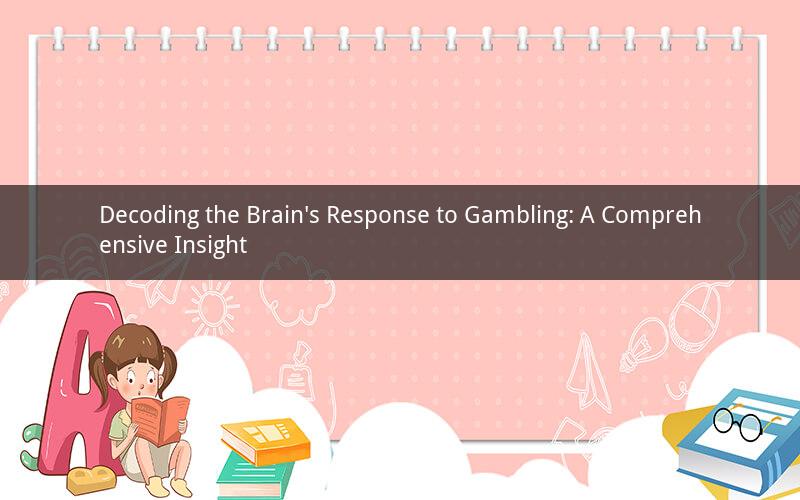
Gambling, a popular form of entertainment, has always intrigued both researchers and the general public. Many wonder about the underlying mechanisms that drive individuals to engage in gambling activities and what happens in the brain when they do. This article aims to provide a comprehensive insight into the neural processes involved in gambling, highlighting the key areas and neurotransmitters that are activated during this behavior.
1. Dopamine and Reward-Seeking Behavior
One of the primary neurotransmitters involved in gambling is dopamine. Dopamine is often referred to as the "reward" neurotransmitter, as it plays a crucial role in driving reward-seeking behavior. When individuals engage in gambling, the brain releases dopamine, which creates a sense of pleasure and reinforces the behavior. This release of dopamine is responsible for the euphoric feeling that gamblers experience when they win.
2. Mesolimbic Dopamine System
The mesolimbic dopamine system is a key neural pathway involved in gambling. This system connects the ventral tegmental area (VTA) in the midbrain to the nucleus accumbens and prefrontal cortex. When individuals engage in gambling, this pathway is activated, leading to increased dopamine release and reinforcement of the behavior.
3. Amygdala and Emotional Regulation
The amygdala, a brain structure responsible for processing emotions, also plays a significant role in gambling. When individuals engage in gambling, the amygdala becomes activated, leading to increased emotional reactivity. This emotional regulation is essential for the brain to process the risks and rewards associated with gambling.
4. Prefrontal Cortex and Decision-Making
The prefrontal cortex is another critical brain area involved in gambling. This region is responsible for executive functions, such as decision-making, impulse control, and risk assessment. When individuals engage in gambling, the prefrontal cortex becomes activated, allowing them to make decisions based on the potential rewards and risks associated with the activity.
5. Striatum and Motor Planning
The striatum, a brain structure involved in motor planning and learning, also plays a significant role in gambling. When individuals engage in gambling, the striatum becomes activated, allowing them to plan and execute their gambling behaviors. This activation is essential for the brain to adapt to the changing conditions of the gambling environment.
6. Brain Regions and Gambling Disorders
Several studies have shown that individuals with gambling disorders exhibit differences in brain regions compared to healthy individuals. For example, individuals with gambling disorders often show reduced activity in the prefrontal cortex, which is responsible for executive functions and decision-making. Additionally, they may exhibit increased activity in the nucleus accumbens, which is associated with reward processing.
Q1: What is the role of dopamine in gambling behavior?
A1: Dopamine plays a crucial role in driving reward-seeking behavior in gambling. It is released when individuals engage in gambling, creating a sense of pleasure and reinforcing the behavior.
Q2: How does the mesolimbic dopamine system contribute to gambling?
A2: The mesolimbic dopamine system connects the VTA to the nucleus accumbens and prefrontal cortex. When individuals engage in gambling, this pathway is activated, leading to increased dopamine release and reinforcement of the behavior.
Q3: What is the role of the amygdala in gambling?
A3: The amygdala is responsible for processing emotions and becomes activated during gambling. This emotional regulation is essential for the brain to process the risks and rewards associated with gambling.
Q4: How does the prefrontal cortex contribute to gambling behavior?
A4: The prefrontal cortex is responsible for executive functions, such as decision-making and risk assessment. It becomes activated during gambling, allowing individuals to make decisions based on the potential rewards and risks associated with the activity.
Q5: What are the differences in brain regions observed in individuals with gambling disorders?
A5: Individuals with gambling disorders often exhibit reduced activity in the prefrontal cortex and increased activity in the nucleus accumbens. These differences in brain regions may contribute to their altered gambling behavior and risk assessment.